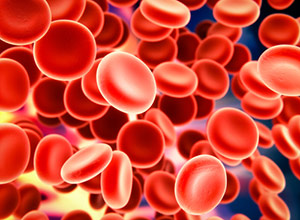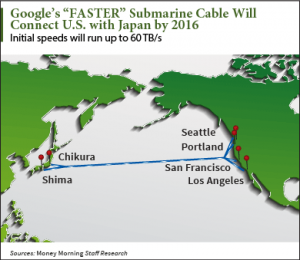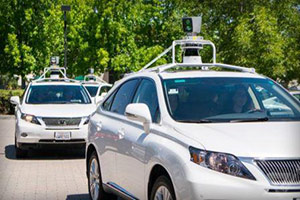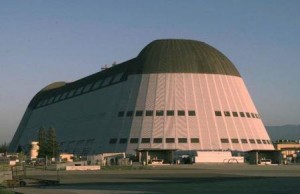Google Inc. (Nasdaq: GOOG, GOOGL) is the most innovative technology company in America.
It's changed the way we search the Internet. Back in 2006, the verb "to Google" was added to the Oxford English Dictionary. In August 2013, a five-minute Google.com outage caused a 40% dip in global web traffic.
It's changed the way we go places. Google Maps is the most-used smartphone app in the world - used roughly 10% more than Facebook's app. Street View has photographed and posted more than 5 million miles of road.
Now, the tech giant is pushing the limits of modern medicine, robotics, space exploration, and more.
"There's tremendous potential for technology more generally to improve people's lives," Google Chief Executive Officer Larry Page wrote in late 2013. "So don't be surprised if we invest in projects that seem strange or speculative compared with our existing Internet businesses."
Page made good on that statement this year.
Take a look at our list of the top five Google innovations of 2014...
5 Amazing Google Innovations in 2014
Google Innovation No. 1: The Cancer-Detecting Pill
 On Oct. 28, Google X - Google's "moonshot" research lab - said it's working on special nanoparticles (each less than one-thousandth the width of a red blood cell) that will patrol your bloodstream as an early-warning system for cancer and other diseases.
On Oct. 28, Google X - Google's "moonshot" research lab - said it's working on special nanoparticles (each less than one-thousandth the width of a red blood cell) that will patrol your bloodstream as an early-warning system for cancer and other diseases.
The particles seek out and glom onto cells, proteins, or other molecules in your body. Then a wearable device that Google's designing in conjunction will use magnetic properties to attract and collect data from the particles.
"Every test you ever go to the doctor for will be done through this system," Google X head of Life Sciences Dr. Andrew Conrad said. "That is our dream."
The technology is at least five years off, but when this Google innovation comes to market, it will change the practice of preventative medicine.
Google Innovation No. 2: The World's Fastest Undersea Cable
On Aug. 12, Google announced a $300 million deal to develop and implement a trans-Pacific cable that connects Japan and the United States undersea.
 "If I were a traditional telecom operator I would be terrified," Money Morning Chief Investment Strategist Keith Fitz-Gerald said earlier this year. "This highlights how much is at stake and will give Google a significant leg up on the 'Internet of Everything.'"
"If I were a traditional telecom operator I would be terrified," Money Morning Chief Investment Strategist Keith Fitz-Gerald said earlier this year. "This highlights how much is at stake and will give Google a significant leg up on the 'Internet of Everything.'"
The submarine cable is called FASTER, and it's just that. FASTER will reach initial speeds of up to 60 terabytes per second (TB/s). By comparison, Comcast internet typically operates at 50 megabytes per second (MB/s). One gigabyte (GB) is equivalent to 1,024 MB, and one TB is equivalent to 1,025 GB. That means FASTER will be 60,000,000 times faster than Comcast internet.
"60 TB/s is in a speed range that typically defines an entire network load," Maintainn developer and MT LLC engineer Rami Abraham said. "If a single computer had such a dedicated connection, the user could download, for example, around 80,000 HD movies in 1 second. That's fast."
The cable will connect U.S. cities Los Angeles, Portland, San Francisco, and Seattle to Japanese cities Chikura and Shima. Construction is already underway. Google expects the cable to be fully operational by second-quarter 2016.
Google followed up in mid-October with a $60 million investment to connect the United States and Brazil with an undersea cable.
Google Innovation No. 3: The Self-Driving Car
Just about every auto firm in the world and plenty of tech companies are working on driverless cars. But no one has done more for this field than Google.
The program began in secret in the early 2000s. Since then, much progress has been made - especially in 2014.

In April, the project's director noted that Google "bot cars" had logged more than 700,000 miles on the road.
On May 28, Google showed off a new prototype that had no steering wheel or pedals - it's 100% autonomous. Google equipped these self-driving cars with complex software, a bevy of motion sensors, collision avoidance systems, 3D maps, and lasers.
In late September, the California Department of Motor Vehicles gave out its first-ever permits that allow companies to test driverless cars on roads anywhere in the state. Google won 25 out of 29 total permits (Audi and Daimler AG-Mercedes Benz received two permits each to test their own autonomous cars).
GOOG expects its driverless cars to go on the market around 2020.
Google Innovation No. 4: The Perfect Body
In July, Google X launched "Baseline Study" - a project aimed at creating the most in-depth picture of what the ideal healthy human looks like.
The team, led by the aforementioned Dr. Conrad, will collect massive amounts of genetic and molecular data. GOOG's vast computer and data network - one of the largest in the world - will be put to use to store and analyze this data.
By using the power and vastness of GOOG's computer and data network - one of the largest in the world - researchers hope to create a template of the perfectly functioning human body. That way, it'll be easier to identify patterns and indicators of cancer, heart disease, and other harmful agents well before our current ability to do so.
"With any complex system, the notion has always been there to proactively address problems," Dr. Conrad told The Wall Street Journal in July. "That's not revolutionary. We are just asking the question: If we really wanted to be proactive, what would we need to know? You need to know what the fixed, well-running thing should look like."
Over the summer, the Google team conducted clinical testing on 175 people, but eventually there will be thousands.
Google Innovation No. 5: The Mystery Move (but We're Pretty Sure It's Space Exploration)

On Nov. 10, Google signed a 60-year, $1.16 billion lease to renovate three hangars in NASA's Moffett Field Naval Air Station just outside of San Francisco.
"We look forward to rolling up our sleeves to restore the remarkable landmark Hangar One, which for years has been considered one of the most endangered historic sites in the United States," Google vice president of real estate and workplace services David Radcliffe said.
The company declined to comment further on its plans - but there are three big reasons that point to space exploration.
First, we know Google founders Larry Page and Sergey Brin are interested in what lies beyond this world. In 2007, they announced the "Google Lunar X Prize." That's $30 million in prizes to the first privately funded teams that can land a robot on the moon, have it travel more than 500 meters, and send back high definition images and video before Dec. 31, 2015. (As of this June, 18 teams remained in the competition.)
Second, Google secured the Moffett lease via its real estate subsidiary Planetary Ventures. The subsidiary's purpose is for "research, development, assembly, and testing in the areas of space exploration, aviation, rover/robotics, and other emerging technologies."
And third, GOOG has been snapping up robotics firms. The company acquired seven firms in less than two years, including Boston Dynamics - which made headlines earlier this week with its "Karate Kid" robot.
"Driverless cars are only the public face of Google's robotics efforts," Money Morning Defense & Tech Specialist Michael A. Robinson said this week. "Behind the scenes, the company has moved aggressively."
Profit Alert: Several "Ebola stocks" have seen their share prices rise recently on rumors about an Ebola vaccine. But most of these investments are traps - the stocks plummet as soon as news breaks about a failed drug trial. That's why the best way to play this trend is this solid big-cap company that's gearing up for a major Ebola drug trial and could have a product out in just seven months. Plus, it's a Dividend Aristocrat. Here's why this is a strong pick for your portfolio - and why it will keep you out of the "Ebola Stock" trap...


